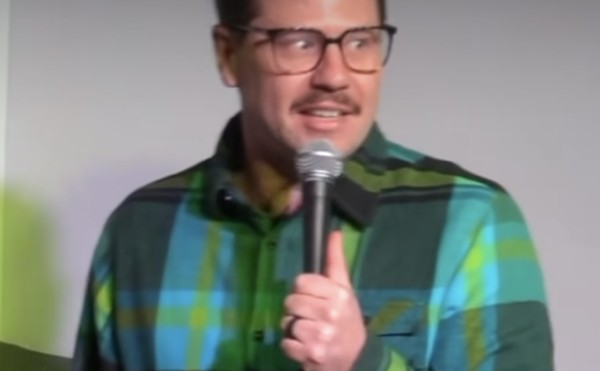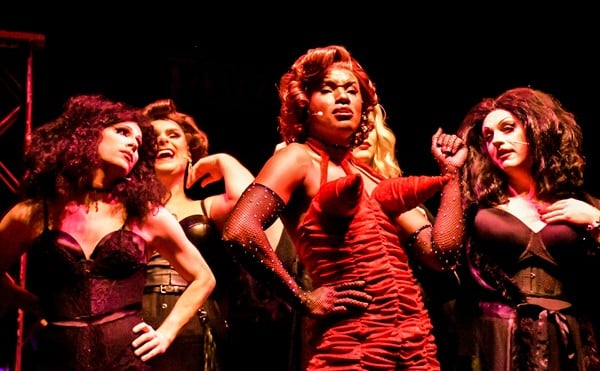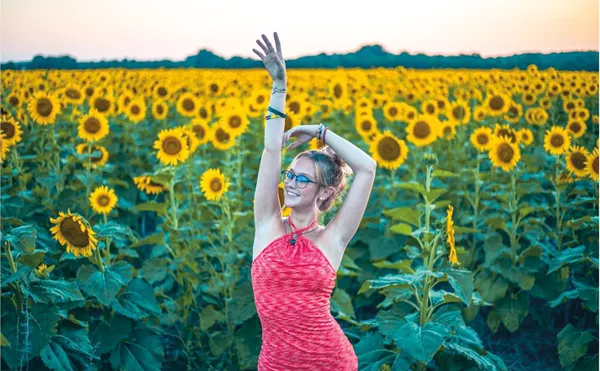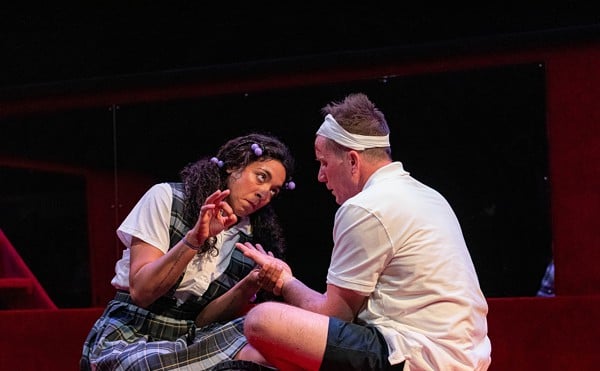Excuse the giddiness, but Wonderland, the elaborate new special exhibition opening July 1 at the St. Louis Art Museum, is the kind of art exhibition that demands exclamation points. Wonderland is guaranteed to take viewers far beyond any art they have ever seen before. In Wonderland, you do more than just view -- you participate, you experience, you move through the art, and the art, in essence, moves you. This is an exhibition that is all about the wonder of spaces and our experiences of them.
Wonderland is an enormous exhibition of 10 works by 10 artists, working inside and outside the museum's walls. Audience participation is the key here -- most of these installations are designed to be entered and experienced over time. This marvelous show is the brainchild of the museum's assistant curator of contemporary art, Rochelle Steiner. She began developing the idea three years ago, after observing the work of artists around the world who share a common link: Their work deals in a variety of ways with the intersection of space, architecture, design and experience. Steiner selected 10 artists to create projects that respond to the museum itself or works that challenge our conventional assumptions about space.
The first encounter visitors will have with Wonderland will probably occur before they ever pass through the museum's doors. Outside the museum in Forest Park, Joep van Lieshout has designed "Pioneer Set," an elaborate structure that includes a farmhouse, a chicken coop and a rabbit hutch. It's populated by farm animals on loan from the St. Louis Zoo. Van Lieshout, a Dutch artist, has established an international reputation for his designs for containers and sensory-deprivation chambers. With "Pioneer Set," he explores spaces designed for self-sufficient living.
Certainly the wildest project in Wonderland belongs to Olafur Eliasson, an Icelandic-born artist known for his work with light and natural materials, including water. Eliasson has taken over the museum's Sculpture Hall and its central fountain. "The drop factory. A short story on your self-ref and rep" is an enormous geodesic dome, covered inside and out with mirrored panels. Inside the dome, strobe lights flash on the flowing water, "freezing" the droplets visually and creating a kaleidoscope of reflective effects. Eliasson's project transforms the space to a startling degree. Its visual impact will last long after the work is gone.
Bill Klaila, an American artist working in Minneapolis, will create a completely different kind of space within the museum's special-exhibition galleries -- a "Virtual Bog," which renders the sensation of walking through a marsh at night by way of the medium of digitized sound and computer-generated images. Ernesto Neto's "It happens when the body is the anatomy of time" is a cavelike space populated by columns of powder spices that emit a heady, sensuous odor.
Janet Cardiff, from Canada, and Pipilotti Rist, from Switzerland, have both created works that are meditations on passages through time and space. Rist's "Ever Is Over All," a work from 1997, projects dual video images that together simulate the experience of a woman's stroll through the streets of Zürich. It's a mesmerizing fusion of public and private experience that the viewers share vicariously. Cardiff's work will literally take the public on a walk, outside the museum's doors, on a prescribed path. Visitors will be supplied with a soundtrack and photographs to accompany their walk.
This is truly an exhibition meant for the public. All of the projects were designed with people in mind, the people who would encounter and pass through and share the spaces. Steiner envisioned Wonderland as an art show for everyone, even those people unaccustomed to looking at art. It's meant to break down any inhibitions people might have about art exhibitions and replace them with a new sense of wonder and enjoyment. In an effort to make Wonderland completely accessible and available to the widest possible public, the museum is waiving its customary admission fee for special exhibitions. The show is free! Visitors can return again and again and again!
And visitors will return often, because Wonderland sparks that sense of adventure, fun and discovery that you normally associate with carnivals and fairs. In fact, Wonderland is a little bit like a year-2000 version of the 1904 St. Louis World's Fair. It's being staged on the exact same grounds as the 1904 Fair. It has the same international, exotic flavor as the World's Fair. And it offers up a series of fascinating tableaux -- but this time, visitors can participate in them, instead of observing scenes from a spatial remove.
Wonderland is a landmark art event for St. Louis. But beyond this city, the show is guaranteed to have an impact on the art world in general. It observes the fact that many contemporary artists are moving far beyond the installation. Unlike what are now considered "traditional" installation pieces, the works in Wonderland don't just take up space -- they thematize it, transform it and invite participation in it.
And the works suggest wide-ranging implications beyond the world of art as well. The questions these works pose cross over into the fields of architecture, design, and cultural and social theory. Steiner was concerned that these issues not be overlooked in all the visual wonder and excitement of the show. The Wonderland catalog, therefore, contains contributions by some real heavy hitters in these fields, including Giuliana Bruno, professor of visual and environmental studies at Harvard University, and Terence Riley, chief curator in the Department of Architecture and Design at the Museum of Modern Art.
It's just another of the wonderful aspects of Wonderland: It has a place for every kind of visitor. Whether you're interested in contemporary theory or interested in the juicy sensory experiences delivered up by the works, or both, you will not be disappointed. Wonderland delivers.
Wonderland opens July 1 and continues through Sept. 24 at the St. Louis Art Museum in Forest Park. For more information, call 314-721-0072.





